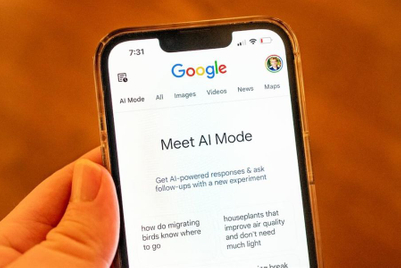The palatial visage of the Forbidden City loomed over commuters in the passageway between the Hong Kong and Central stations, which nearly 220,000 humans pass through each weekday.
The HK$1.58 million exhibition-styled posters in one of the busiest interchanges in the MTR (Mass Transit Railway) system were part of a campaign by the Hong Kong government in January. The intent: to promote a controversial plan to build a Hong Kong version of China’s national Palace Museum, which lies within the Forbidden City. At the height of a protest against the plan, the ad installation became a rather effective backdrop for demonstrators, who camped out in the station. Although that was definitely not what the government had in mind when it commissioned the ad, it does prove the effectiveness of large-scale MTR advertising, in a sense.
Shirley Chan, managing director of JCDecaux Transport, which manages the advertising concession for the MTR, said "underground" advertising is still relevant in the public transport-centric city due to its reach, as most Hong Kongers spend at least some time in the 91-station system in their daily lives. The Hong Kong 4As reported that outdoor display accounted for 15 percent of advertising spend last year, while TV was top with a 30 percent share.
“The Hong Kong MTR is a world-class facility in terms of efficiency, cleanliness and safety level," Chan told Campaign Asia-Pacific. "Advertisement wise, we are also quite ahead in using AR, VR and face recognition technology in the interactive displays.” She pointed to a recent partnership with Madame Tussauds, which allowed commuters to take photos with virtual wax figures using a mobile app to win free admission tickets and other prizes. The campaign appeared in the Central and Hong Kong stations.
“We could not help it that many commuters are glued to their phone screens, that is why we try to plan for campaigns that engage with consumers through their phones,” said Chan. According to her, QR-code scans have been the most common mechanism for mobile engagement. Beacon technology has been incorporated into the ad infrastructure within the train stations since 2015 for location as well as shake functions for WeChat users to connect with brands.
“Campaigns that revolve around games and contests are the more accessible ways for brands to capture data," Chan said. "With the beacon-enabled WeChat activation now, brands can also build user profiles based on gender and interest. In fact, data capture will help us to more accurately pinpoint the target audience profile for each station and their commuting patterns to allow brands to plan a network or a targeted buy." This is more sophisticated than simply relying on common sense such as that visitors to Tsim Sha Tsui are into shopping or the business crowd is best reached in Central and Admiralty.
JCDecaux has a team that works with creatives and brands to strategise on the suitable media for ad placement. For instance, a Now TV campaign launched in February plastered the faces of K-drama actors on the seats, similar to a campaign by Adidas during the 2014 World Cup that painted the shirt numbers of the players on train seats.
Having overseen an enourmous number of campaigns on the stations and coaches over the years, Chan said it is difficult for her to pick a personal favourite. But one that stood out was a 2015 campaign by online shopping platform HKTV Mall, which used the names of 51 stations to craft puns and ideograms. “It was very meaningful," she said. "The campaign was the talk of the town throughout the six weeks that it ran.”


_MTHK-CEN-ExhibitionSite_MG_3606+ret.jpg&h=500&w=750&q=100&v=20250320&c=0)
_MTHK-CEN-ExhibitionSite_MG_3584+ret.jpg&h=500&w=750&q=100&v=20250320&c=0)





_MTHK-CEN-ExhibitionSite_MG_3606+ret.jpg&h=100&w=150&q=100&v=20250320&c=1)
_MTHK-CEN-ExhibitionSite_MG_3584+ret.jpg&h=100&w=150&q=100&v=20250320&c=1)







.jpg&h=334&w=500&q=100&v=20250320&c=1)
.jpg&h=334&w=500&q=100&v=20250320&c=1)
.jpg&h=334&w=500&q=100&v=20250320&c=1)
.jpg&h=334&w=500&q=100&v=20250320&c=1)
.jpg&h=334&w=500&q=100&v=20250320&c=1)







.png&h=268&w=401&q=100&v=20250320&c=1)
.jpg&h=268&w=401&q=100&v=20250320&c=1)
.jpg&h=268&w=401&q=100&v=20250320&c=1)
